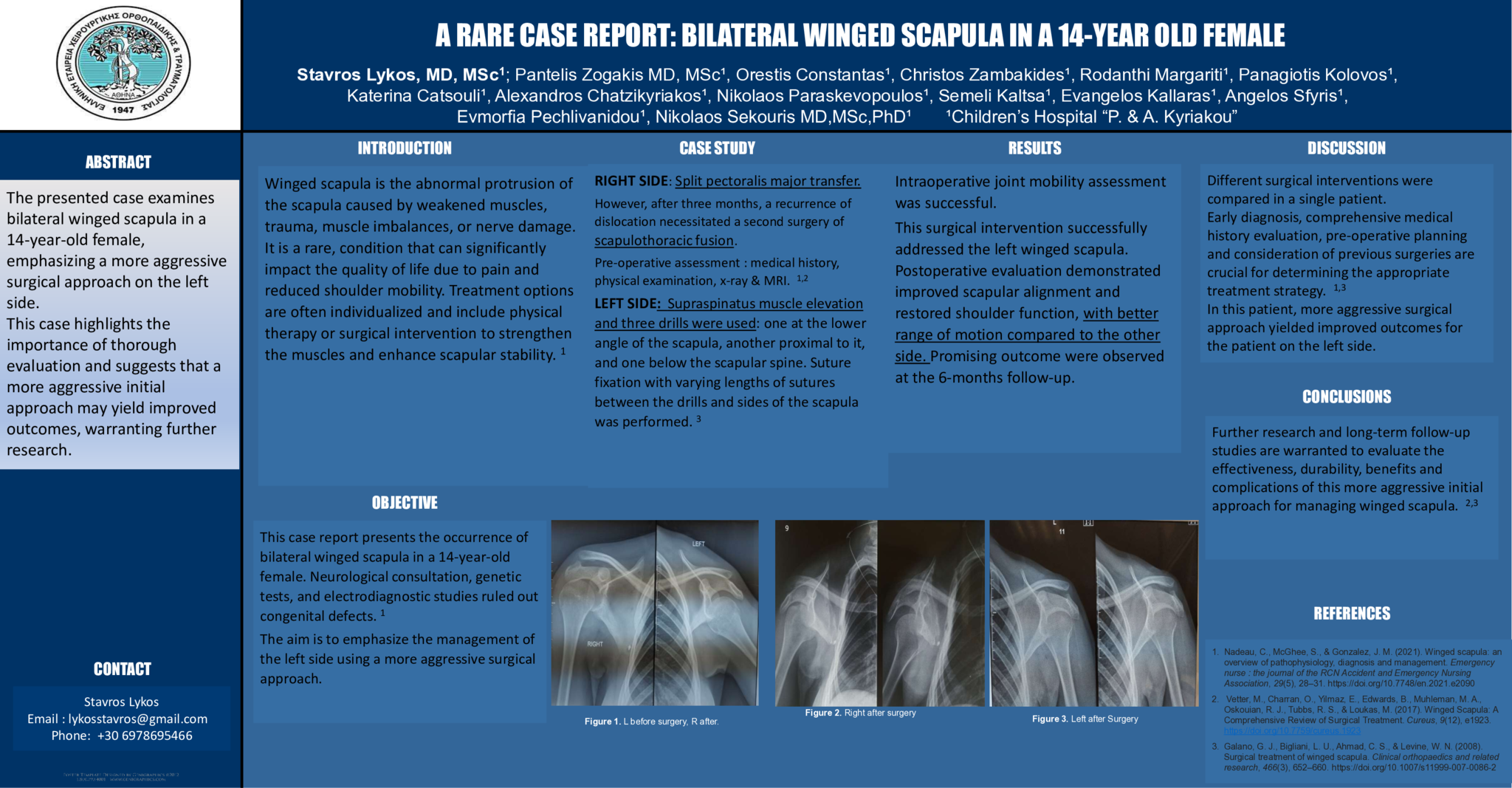INTRO
Winged scapula is the abnormal protrusion of the scapula caused by weakened muscles, trauma, muscle imbalances, or nerve damage. Treatment options include physical therapy or surgical intervention to strengthen the muscles and enhance scapular stability.
OBJECTIVE
This case report presents the occurrence of bilateral winged scapula in a 14-year-old female. The aim is to emphasize the management of the left side using a more aggressive surgical approach.
METERIALS AND METHODS
In November 2022 a 14-year-old female with a history of right scapula surgery presented with left scapula dislocation. The initial surgery on the right side, involving Split pectoralis major transfer, was performed in December 2021. However, after three months, a recurrence of dislocation necessitated a second surgery of scapulothoracic fusion. Pre-operative assessment included medical history, physical examination, radiographs, and MRI. Neurological consultation, genetic tests, and electrodiagnostic studies ruled out congenital defects. Surgical intervention aimed to restore scapular functionality. The supraspinatus muscle was elevated, and three drills were used: one at the lower angle of the scapula, another proximal to it, and one below the scapular spine. Suture fixation with varying lengths of sutures between the drills and sides of the scapula was performed. Intraoperative joint mobility assessment was successful.
RESULTS
This surgical intervention successfully addressed the left winged scapula. Postoperative evaluation demonstrated improved scapular alignment and restored shoulder function, with better range of motion compared to the other side. Promising outcome were observed at the 6-months follow-up.
CONCLUSION
For this rare disease, different surgical interventions were compared in a single patient. Early diagnosis, comprehensive medical history evaluation, pre-operative planning and consideration of previous surgeries are crucial for determining the appropriate treatment strategy. In this patient, more aggressive surgical approach yielded improved outcomes for the patient on the left side. Further research and long-term follow-up studies are warranted to evaluate the effectiveness, durability, benefits and complications of this more aggressive initial approach for managing this condition.
- 21 προβολές




